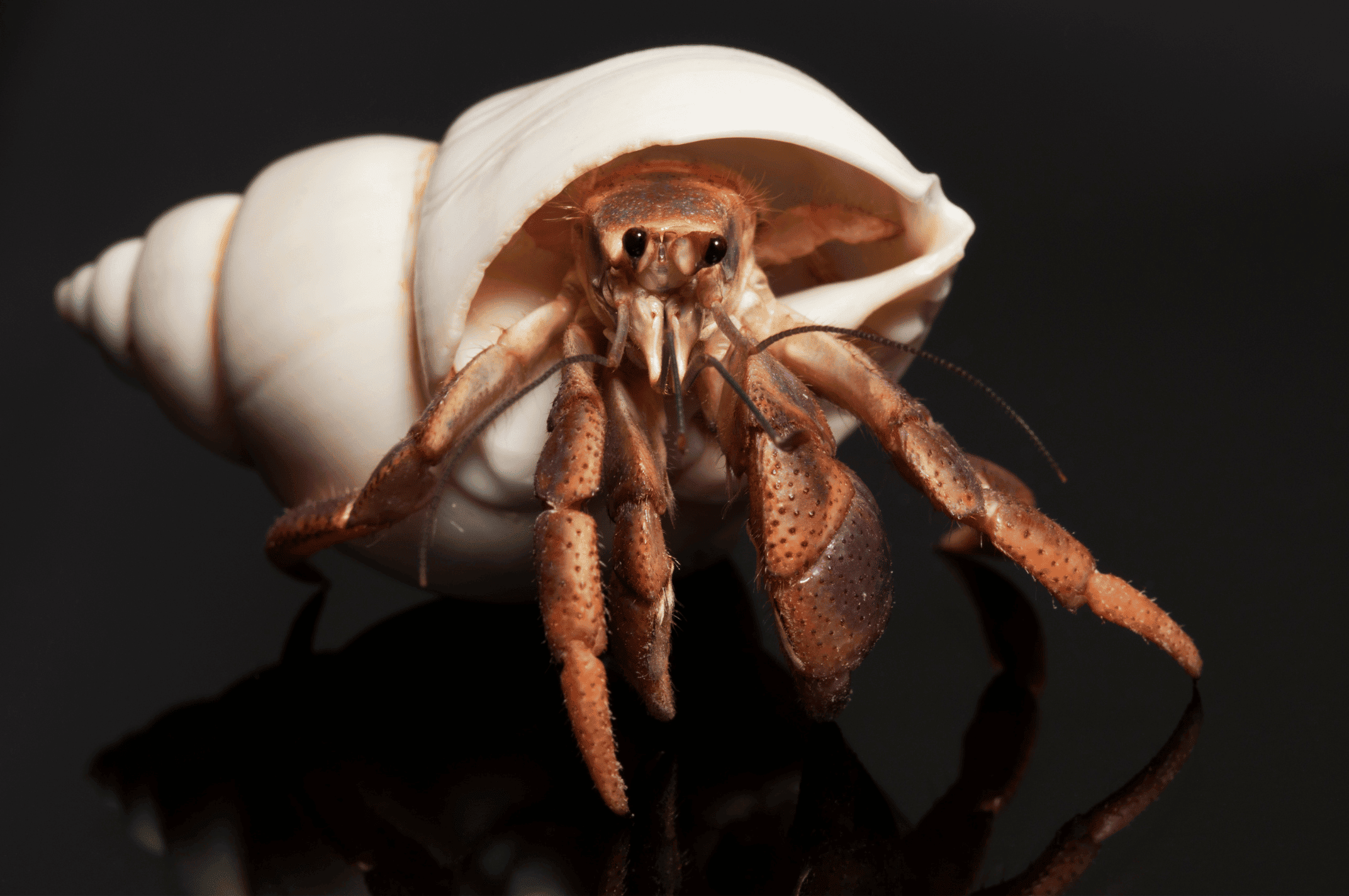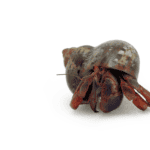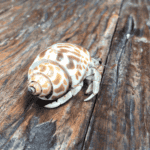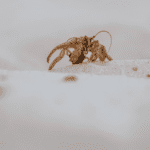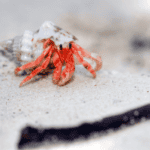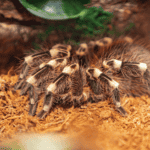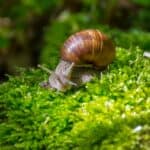Taking care of hermit crabs can be a fun and rewarding experience for pet owners. These small crustaceans are fascinating creatures that are easy to care for and can live for up to 10 years with proper care. In this article, we will provide a comprehensive guide to hermit crab care, covering everything from their habitat and diet to their molting process and health and safety considerations.
Understanding the needs of hermit crabs is the first step in providing them with a suitable home. These social creatures require a glass tank that is large enough to accommodate their size and number. The tank should be lined with substrate that allows them to burrow and hide, and should be kept at a temperature and humidity level that mimics their natural habitat. Additionally, hermit crabs require a varied diet that includes both fresh and saltwater, as well as fruits, vegetables, and protein sources.
Key Takeaways
- Hermit crabs require a suitable habitat that mimics their natural environment and provides them with plenty of space to move around.
- Proper temperature and humidity levels are essential for their health and well-being.
- A varied diet that includes both fresh and saltwater, as well as fruits, vegetables, and protein sources, is crucial for their nutrition.
Understanding Hermit Crabs
Species and Types
As we begin to understand Hermit Crabs, it is important to note that there are over 800 species of Hermit Crabs. These species are part of the superfamily Paguroidea. However, the most commonly kept Hermit Crab species in captivity are the Caribbean Hermit Crab (Coenobita clypeatus) and the Ecuadorian Hermit Crab (Coenobita compressus).
Behavior and Traits
Hermit Crabs are known for their unique behavior and traits. They are social animals that require at least two other Hermit Crabs to stay healthy and not feel lonely. They are also known for their large claws, which they use for protection and to climb. Hermit Crabs are nocturnal and are most active during the night. They are also known for their ability to molt, which is the process of shedding their exoskeleton and growing a new one.
Family and Lifespan
Hermit Crabs belong to the family Coenobitidae, which includes other species such as the Strawberry Hermit Crab and the Tree Hermit Crab. The lifespan of a Hermit Crab can vary depending on the species and the care provided. On average, they can live up to 10 years with proper care.
In summary, understanding Hermit Crabs involves knowing their species and types, behavior and traits, as well as their family and lifespan. As we continue to learn about these fascinating creatures, it is important to provide them with the proper care they need to thrive in captivity.
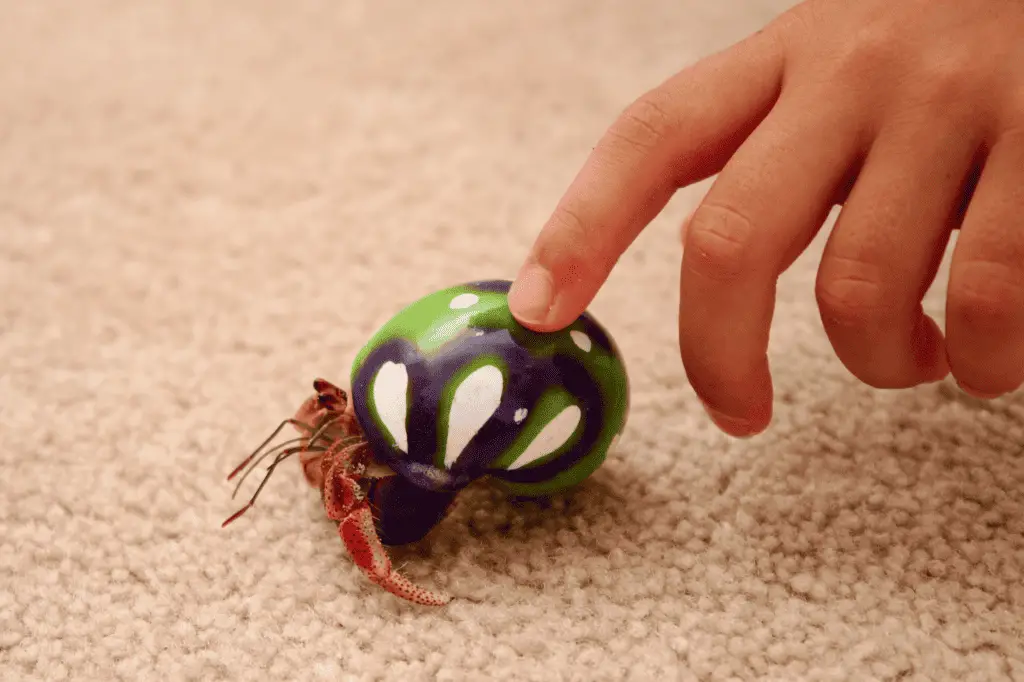
Housing and Habitat
When it comes to housing and habitat for hermit crabs, there are a few important things to keep in mind. Here are some sub-sections to help you get started:
Choosing the Right Tank
Hermit crabs need a tank that is big enough for them to move around in and explore. We recommend a glass tank that is at least 10 US gallons (38 liters) for every 2 crabs. Make sure the tank has a lid to keep your crabs from escaping and to help maintain the right humidity levels.
Substrate and Soil
The bottom of your tank should be covered with a substrate that is at least 2-3 inches deep. We recommend using a mix of silica play sand, soil, and/or coconut fiber. This will give your crabs a place to burrow and molt. Make sure the substrate is kept moist but not too wet.
Creating a Crabitat
To create a comfortable and stimulating environment for your hermit crabs, you can add some accessories to their tank. We recommend adding some larger empty seashells for your crabs to use as future housing, as well as some hiding places like rocks, logs, and plants. You can also add a shallow dish of fresh water and a dish of salt water for your crabs to drink and bathe in.
Enclosure Size and Lid
The size of your enclosure will depend on how many hermit crabs you have. As a general rule, you should have at least 5 gallons of space per crab. Make sure the enclosure has a lid to help maintain the right humidity levels and to keep your crabs from escaping. You can use a fish tank or reptile terrarium as an enclosure, just make sure it is the right size and has a secure lid.
Overall, it is important to create a comfortable and stimulating environment for your hermit crabs. By choosing the right tank, substrate, and accessories, you can help your crabs thrive in their new home.
Temperature and Humidity
Maintaining the proper temperature and humidity is crucial for the health and well-being of your hermit crab. In this section, we will discuss how to maintain the ideal temperature and humidity levels, as well as the use of a hygrometer and heater.
Maintaining Temperature
The ideal temperature range for hermit crabs is between 72 and 82 degrees Fahrenheit. It is important to maintain a consistent temperature range as fluctuations can cause stress and illness in your hermit crab. To achieve this, we recommend using a tank heater or clamp lamp to maintain the temperature. It is essential to monitor the temperature regularly to ensure it stays within the ideal range.
Maintaining Humidity
Hermit crabs require a humid environment to breathe properly. The ideal humidity level for hermit crabs is between 70% and 80%. To maintain proper humidity levels, we recommend misting the tank with non-chlorinated water as necessary. It is essential to monitor the humidity level regularly to ensure it stays within the ideal range.
Use of Hygrometer and Heater
To maintain the proper temperature and humidity levels, it is crucial to use a hygrometer and heater. A hygrometer is a device that measures the humidity level in the tank, while a heater helps to maintain the temperature. We recommend using a quality hygrometer and heater to ensure accurate readings and consistent temperature and humidity levels.
In conclusion, maintaining the proper temperature and humidity is essential for the health and well-being of your hermit crab. By using a hygrometer and heater, you can ensure that your hermit crab is living in a comfortable and healthy environment.
Feeding and Nutrition
Hermit Crab Diet
As responsible pet owners, we must provide our hermit crabs with a balanced diet that mimics what they would eat in the wild. In their natural habitat, hermit crabs are omnivores and feed on a variety of foods such as fruits, vegetables, and even dead animals. In captivity, it is recommended to provide them with a commercial hermit crab food that contains a mix of pellets, dried fruits, and vegetables.
It is important to note that hermit crabs are selective eaters and may not eat all the food provided. Therefore, it is recommended to offer a variety of foods to ensure they are getting all the necessary nutrients. Fresh fruits and vegetables can also be provided as a supplement to their commercial food.
Feeding Schedule
Hermit crabs are nocturnal creatures and are most active at night. Therefore, it is best to feed them at night when they are most active. It is recommended to offer food every other day and remove any uneaten food after 24 hours to prevent mold growth and bacterial infections.
Nutritional Requirements
Hermit crabs require a balanced diet that is high in protein, calcium, and other essential vitamins and minerals. Commercial hermit crab food should contain at least 20% protein and 2% calcium. It is also important to provide them with a freshwater dish and a saltwater dish to maintain their hydration and electrolyte balance.
In addition to their food, hermit crabs also require a source of calcium to maintain their exoskeleton. Crushed eggshells or cuttlebone can be provided as a source of calcium.
Overall, providing a balanced diet and following a regular feeding schedule is crucial for the health and well-being of our hermit crabs.
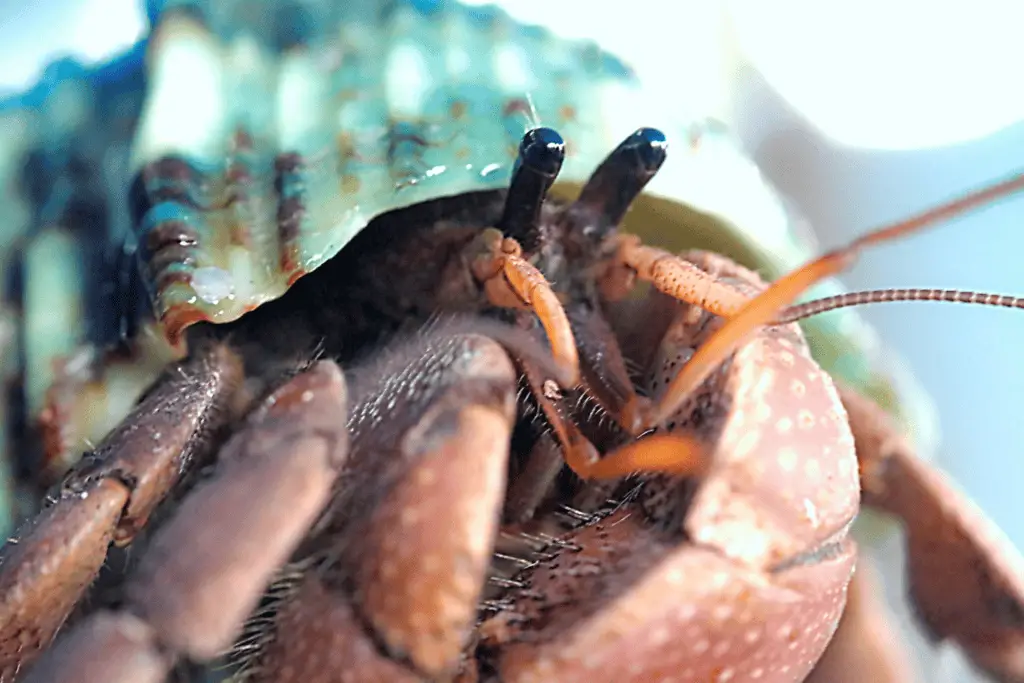
Water and Hydration
Fresh and Saltwater Requirements
As hermit crabs are land creatures, they require access to both freshwater and saltwater to stay hydrated. It is essential to provide your hermit crab with two shallow dishes, one for freshwater and the other for marine-grade saltwater. Both dishes should be just deep enough so that the hermit crab can submerge itself completely. It’s important to note that hermit crabs cannot breathe underwater, so make sure the dishes are not too deep.
Dechlorinating Tap Water
Tap water contains chlorine, which is harmful to hermit crabs. Therefore, it is crucial to dechlorinate tap water before offering it to your hermit crab. You can use a dechlorinator that is safe for aquatic animals and plants, or let the water sit for 24 hours before using it. During this time, the chlorine will evaporate, and the water will be safe for your hermit crab.
Water Dishes and Bowls
It’s important to keep the sides of the dishes low enough so that the crab can get out easily. Also, make sure to clean and refill the dishes daily to prevent bacterial growth and ensure that your hermit crab has access to clean water at all times. You can use a reptile water conditioner to keep the water clean and healthy for your hermit crab.
In summary, providing your hermit crab with access to freshwater and marine-grade saltwater is essential for their hydration and overall health. Make sure to dechlorinate tap water and keep the water dishes clean and refilled daily to ensure that your hermit crab has access to clean and safe water.
Hermit Crab Shells
As hermit crabs grow, they need to change shells to accommodate their increasing size. Shells are not just a simple accessory for a hermit crab, they are a vital part of their habitat. In this section, we will discuss the importance of shells and how to choose the right ones for your hermit crab.
Importance of Shells
A hermit crab’s shell is more than just a home. It protects their soft abdomen and regulates moisture within the shell, which is important for the function of the gills for breathing. Without the right shell, a hermit crab can become stressed, sick, or even die.
Choosing the Right Shell
Choosing the right shell is crucial for your hermit crab’s health and happiness. Here are some things to keep in mind when selecting shells:
- Size: A shell should be big enough for your hermit crab to comfortably fit inside, but not so big that it feels exposed and vulnerable. A good rule of thumb is to provide at least three similarly-sized shells per hermit crab, with at least two being slightly larger.
- Type: Hermit crabs prefer seashells with a round opening, such as those of snails or whelks. Avoid shells with sharp edges or narrow openings, as they can harm your hermit crab or prevent them from entering or exiting the shell.
- Condition: Choose shells that are in good condition, without cracks or holes. Cracks and holes can let in air and dry out the shell, making it uninhabitable for your hermit crab.
- Variety: Give your hermit crab a selection of shells to choose from. They may have a preference for a certain type of shell or a particular color.
In conclusion, shells are an essential part of a hermit crab’s habitat. Choosing the right shells can make a big difference in your hermit crab’s health and happiness. By providing a variety of shells in different sizes and types, you can ensure that your hermit crab has a safe and comfortable home.
Handling and Interaction
As responsible pet owners, we want to ensure that our hermit crabs are healthy and happy. Proper handling techniques and social interaction are essential to achieving this goal.
Proper Handling Techniques
When handling a hermit crab, it is important to be gentle and cautious. These creatures are delicate and can easily become stressed or injured. Here are some tips for proper handling:
- Always wash your hands before handling your hermit crab to remove any oils or lotions that could harm them.
- Hold your hermit crab gently but firmly, supporting their entire body. Avoid pinching or squeezing them.
- Never pick up a hermit crab by their shell or limbs. This can cause serious harm to them.
- Avoid sudden movements or loud noises that could startle your hermit crab.
- Handle your hermit crab for short periods of time, no more than a few minutes at a time. They are nocturnal creatures and prefer to be left alone during the day.
Social Interaction
Hermit crabs are social creatures and thrive in groups. It is important to provide them with friends or roommates to keep them happy and healthy. Here are some tips for social interaction:
- Provide your hermit crabs with at least two other crabs. This will allow them to establish a hierarchy and reduce stress.
- Make sure that the crabs you introduce are of similar size and temperament to avoid aggression.
- Provide plenty of hiding places and shells for each crab to have their own space.
- Observe your hermit crabs to ensure that they are getting along. If you notice any signs of aggression, such as fighting or bullying, separate the crabs immediately.
In conclusion, proper handling techniques and social interaction are crucial for the health and happiness of your hermit crabs. By following these tips, we can ensure that our pets are well-cared for and thriving.
Molting Process
Understanding Molting
Molting is a natural process that hermit crabs go through to grow and replace their exoskeleton. During this process, they shed their exoskeleton and form a new one. Hermit crabs usually molt every 12 to 18 months, and the process can take anywhere from a few weeks to a few months, depending on the size of the crab.
Caring for Molting Hermit Crabs
When a hermit crab is molting, it is important to provide them with the right care to ensure a successful molt. Here are some tips on how to care for your molting hermit crab:
- Do not disturb them: Molting is a vulnerable time for hermit crabs, and they need to be left alone. Do not touch or handle them during this time, as it can cause stress and even lead to death.
- Provide a humid environment: Hermit crabs need a humid environment to molt successfully. Maintain a humidity level of 70-80% by misting the enclosure daily or using a humidifier.
- Offer extra food and water: Hermit crabs consume more food and water before and after molting to prepare for the process and recover from it. Ensure that there is always fresh water and food available for your crab.
- Provide a molting area: Hermit crabs need a safe and quiet place to molt. Provide a separate area in the enclosure with a substrate depth of at least three times the crab’s size.
- Be patient: Molting can take a long time, and it is important to be patient and let the process run its course. Avoid disturbing the crab or trying to speed up the process.
In conclusion, molting is a natural process that hermit crabs go through to grow and replace their exoskeleton. During this time, they need to be left alone and provided with a humid environment, extra food and water, a separate molting area, and patience. By following these tips, you can ensure that your hermit crab molts successfully and stays healthy.
Health and Safety
As responsible hermit crab owners, we must prioritize the health and safety of our pets. In this section, we will discuss common health problems and when to consult a veterinarian.
Common Health Problems
Hermit crabs are generally healthy creatures, but they are vulnerable to certain conditions. Here are some common health problems to watch out for:
- Gill Infections: Hermit crabs breathe through gills, which can become infected if the water quality is poor. Signs of a gill infection include difficulty breathing, lethargy, and loss of appetite.
- Shell Rot: This is a fungal infection that can cause the shell to become soft and discolored. It is often caused by high humidity levels and poor ventilation.
- Stress: Hermit crabs can experience stress if their environment is not suitable. Signs of stress include lethargy, loss of appetite, and hiding in their shells.
When to Consult a Veterinarian
If you notice any signs of distress or illness in your hermit crab, it is important to consult a veterinarian who specializes in exotic pets. Here are some situations where you should seek professional help:
- Your hermit crab is not moving or responding to stimuli.
- Your hermit crab is having difficulty breathing.
- Your hermit crab has a visible injury or abnormal growth.
- Your hermit crab has not eaten or moved for an extended period of time.
Remember, prevention is key when it comes to hermit crab health and safety. Make sure to provide a suitable environment, monitor water quality, and seek professional help when necessary.
Frequently Asked Questions
What to get for hermit crabs
When getting started with hermit crabs, it’s important to have the right supplies. You will need a glass tank, a secure lid, substrate (sand or soil), food and water dishes, and a source of heat and humidity.
What can hermit crabs eat
Hermit crabs are omnivores and will eat a variety of foods. They enjoy fresh fruits and vegetables, as well as commercial hermit crab food. It’s important to avoid feeding them anything that is high in salt, sugar, or preservatives.
How to take care of a hermit crab for beginners
For beginners, it’s important to start with a basic setup and gradually add more items as you become more experienced. You will need to monitor the temperature and humidity levels in the tank, and provide fresh food and water daily.
How to take care of a hermit crab from the beach
If you find a hermit crab at the beach, it’s important to provide it with a proper habitat as soon as possible. You will need to provide a tank with substrate, food and water dishes, and a source of heat and humidity.
Do hermit crabs need saltwater
Yes, hermit crabs need access to both freshwater and saltwater in order to thrive. You can provide them with a dish of saltwater and a dish of freshwater in their tank.
How many hermit crabs should be housed together?
Hermit crabs are social creatures and do well in groups. It’s recommended to have at least two hermit crabs in a tank, but no more than four per ten gallons of tank space. It’s important to monitor their behavior and make sure they are getting along.
